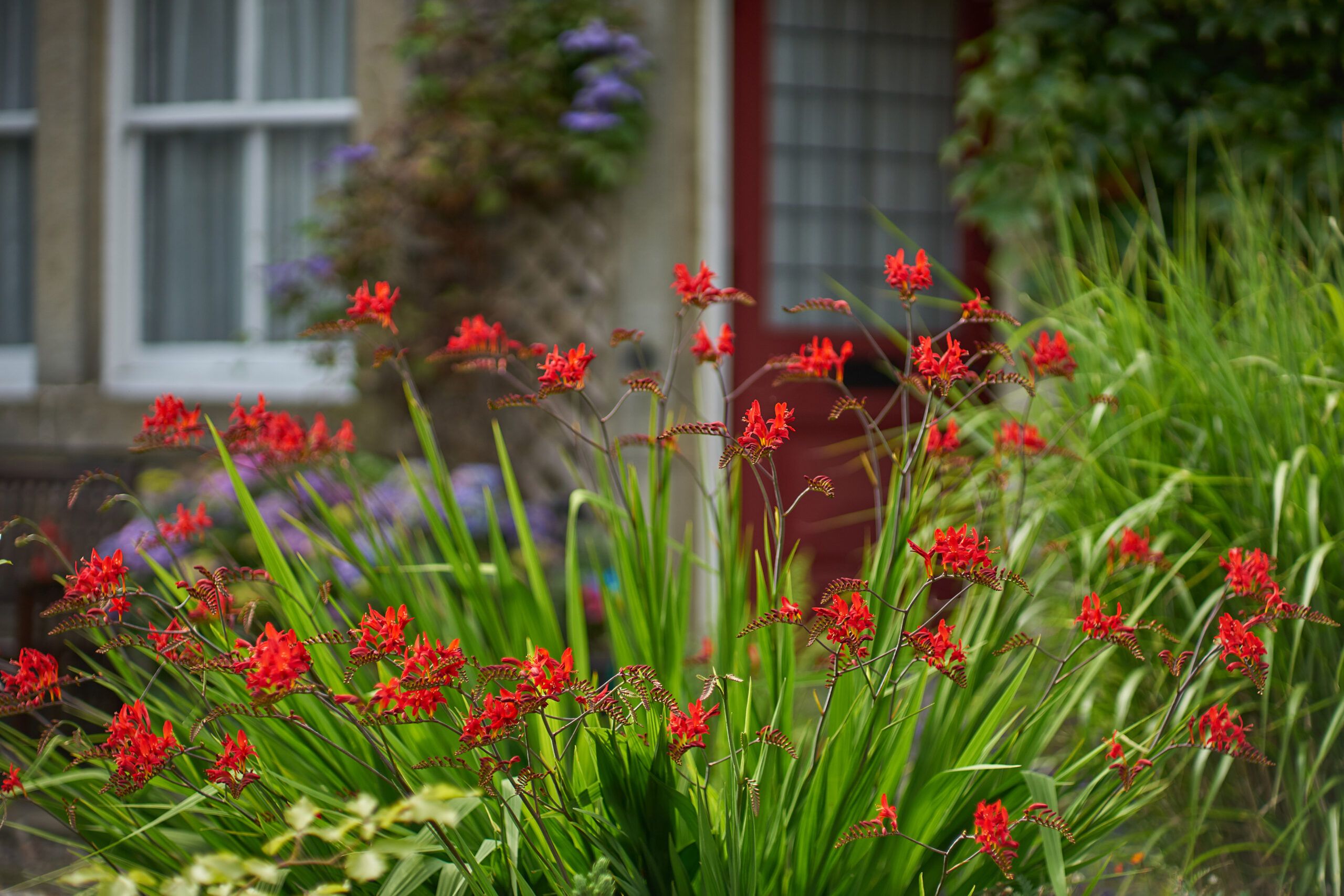As spring flowers wither and the weather warms up, savvy gardeners turn to summer-blooming bulbs to keep their landscapes colorful. These easy-to-grow plants come in various colors and heights, making them perfect for borders, foundation plantings, and patio containers.
Unlike spring-blooming bulbs, summer bulbs don’t need a winter chilling period, which makes them an excellent choice for adding beauty to your garden throughout the warmer months. Our guide features 10 summer-blooming bulbs, including early and late bloomers, that will keep your garden vibrant all summer.
Early Bloomers
If you want an early transition from spring to summer for your garden, we recommend planting these early-blooming flowers right after the ground thaws.
Starflower
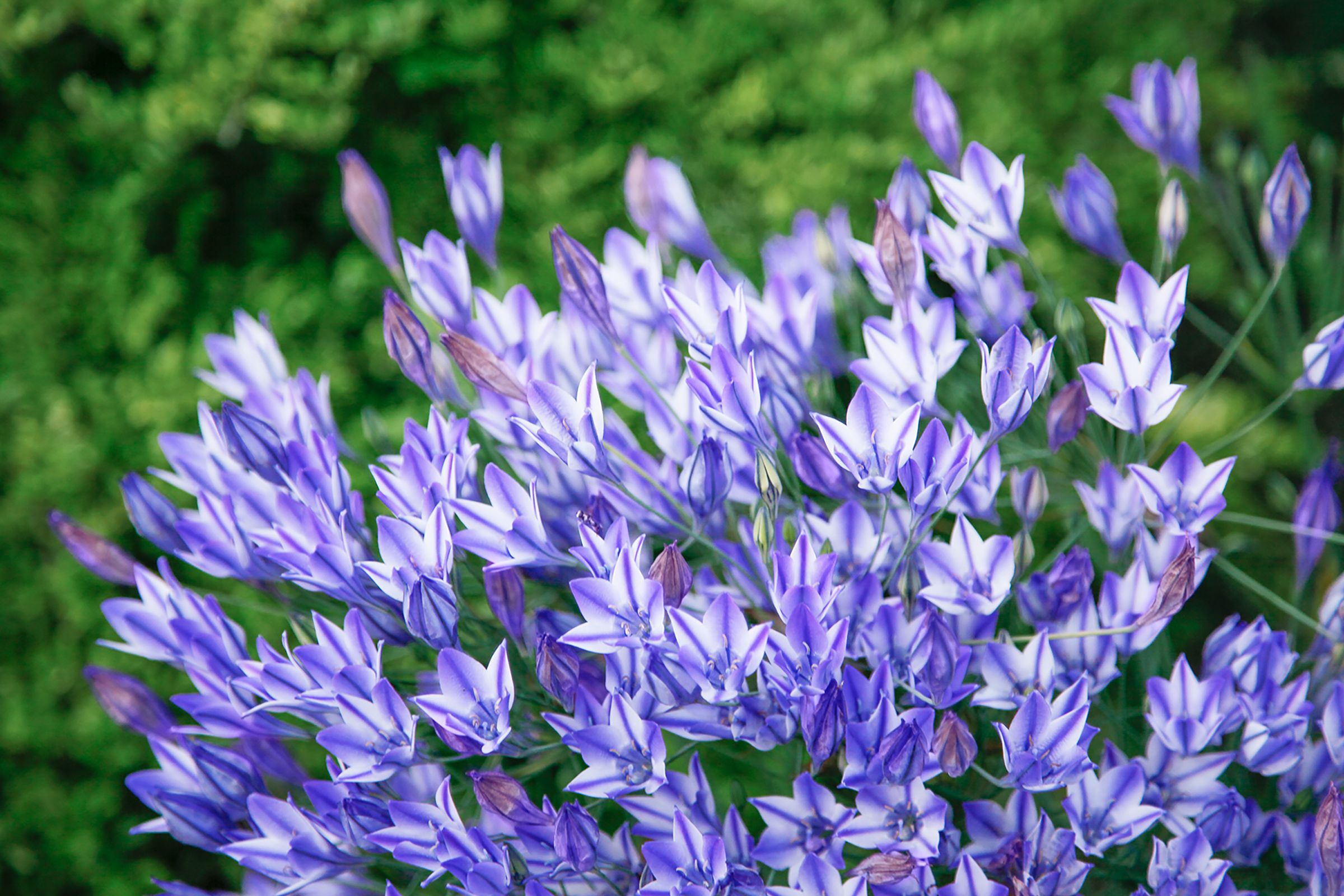
The starflower, a shade-tolerant California native, produces clusters of pale to deep-purple, funnel-shaped flowers from late spring into early summer. The “Rudy” variety (shown) offers up to 25 white-and-purple flowers per stem. Its grassy foliage naturally fades away in summer, requiring minimal maintenance. These flowers grow up to 2 feet tall and 16 inches wide and naturalize well in Zones 5-9.
It is an excellent choice for woodland gardens or partially shaded borders. This color diversity and ease of maintenance make it appealing to gardeners who prefer low-maintenance yet stunning blooms.
Peruvian Daffodil

The Peruvian daffodil, another shade-tolerant species, blooms in early summer with up to five white, fragrant flowers on each 24-inch-long stem and dark green leaves. The “Sulfur Queen” variety (shown) produces six soft-yellow flowers per stem, each featuring a green throat and a delightful citrus scent. This bulb grows up to 2 feet tall and 1 foot wide and thrives in Zones 8-10.
It’s perfect for adding a tropical touch to partially shaded areas or container gardens. These flowers can also add a lovely fragrance to your garden space, making them versatile choices for decorative gardening.
Montbretia
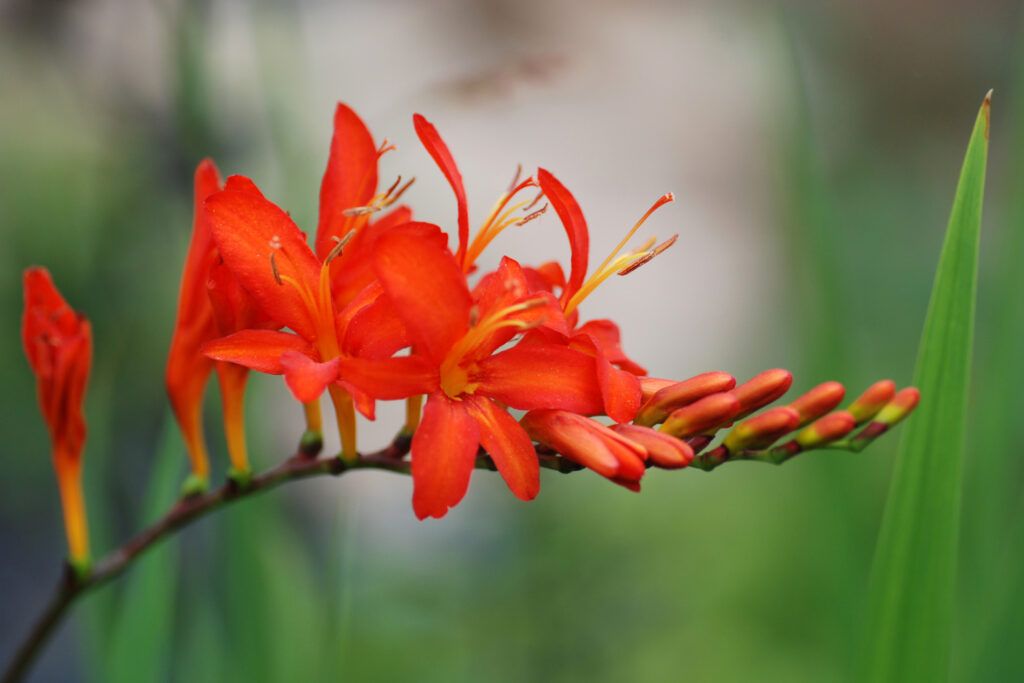
Montbretia offers a vibrant display of orange-red flowers from midsummer until early fall and can tolerate partial shade. The “Lucifer” variety (shown) features pleated, strappy green leaves and scarlet-red blooms that face upward on arching stems. This variety can grow up to 4 feet tall and 2 feet wide and does well in Zones 6-9.
This plant introduces a striking vertical component to garden borders and attracts hummingbirds. However, we recommend avoiding hybrids, which can become invasive in some regions.
Foxtail Lily and Dwarf Asiatic Lily
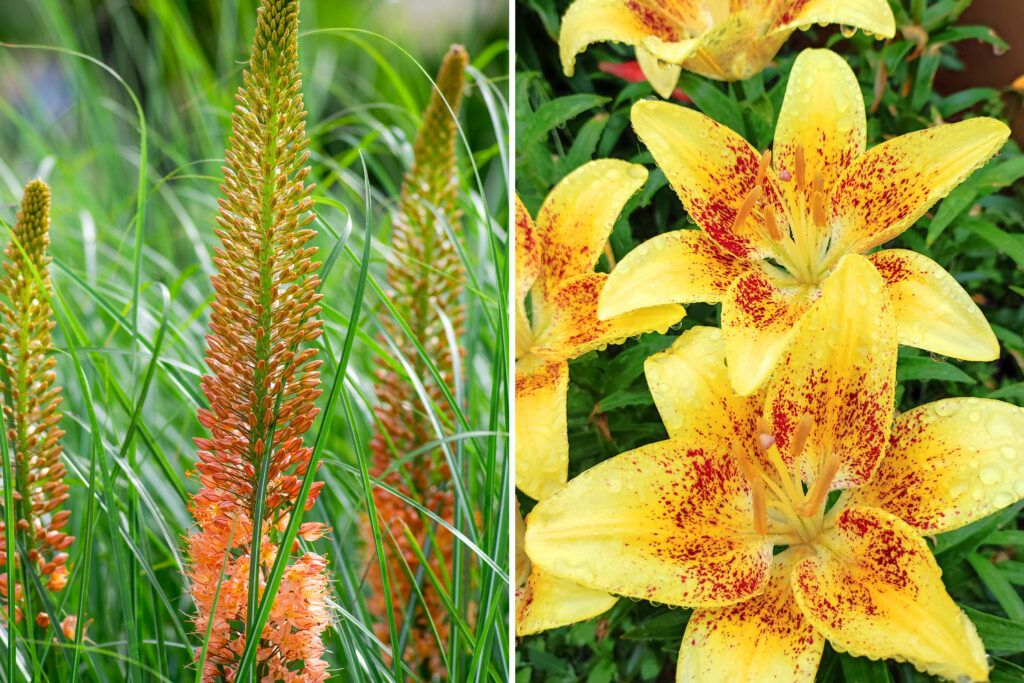
The foxtail lily produces spires covered with hundreds of dark-yellow, bell-shaped flowers that rise above grayish-green leaves in early summer. The “Cleopatra” variety (shown on the left) naturalizes easily and features burnt-orange petals marked with red ribs. The foxtail lily can grow as high as 5 feet tall and 2 feet wide in Zones 5-9.
This bulb works well in the back of borders or as a focal point in larger gardens. Its tall architectural structure complements lower-growing perennials, creating a visually appealing layered garden.
Dwarf Asiatic lilies bloom in various colors, including white, pink, orange, and red, from early to mid-summer. These compact varieties are perfect for smaller gardens or container planting. The “Tiny Orange Sensation” (shown on the right) remains short while producing a stunning display of orange and maroon blooms. With impressive heights of up to 16 inches tall and 1 foot wide in Zones 3-9, these lilies are ideal for adding pops of color to rock gardens, front borders, or patio planters.
Their compact size also makes them less susceptible to wind damage than taller lily varieties.
Late Bloomers
Plant these flowering bulbs near early-summer bloomers to hide the latter’s fading foliage. These late bloomers remain vibrant and colorful well into the summer months.
Blazing Star
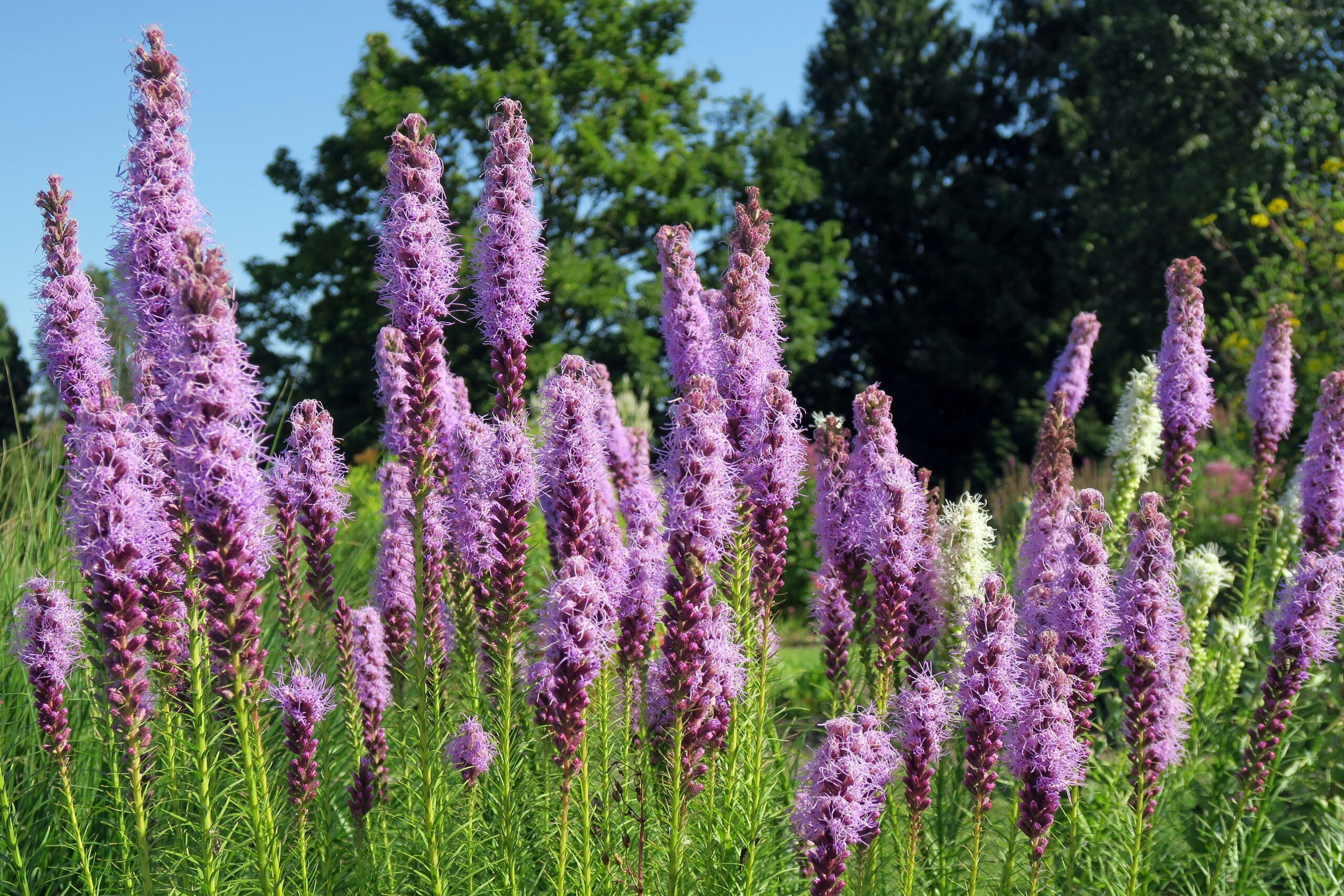
The blazing star, a North American native, produces densely packed, 18- to 28-inch-tall spikes of pinkish-purple or white flowers over grassy foliage. The compact “Kobold” variety (shown) doesn’t require staking and features deep-purple flowers from July to August.
The blazing star can grow up to 30 inches tall and 1 foot wide and does well in Zones 3-8. This bulb is an excellent choice for attracting butterflies and bees to your garden. Its vertical form adds structure to perennial borders and works well in both formal and naturalistic planting schemes. The blooms of the blazing star also attract pollinators, enhancing your garden’s biodiversity.
Peacock Flower
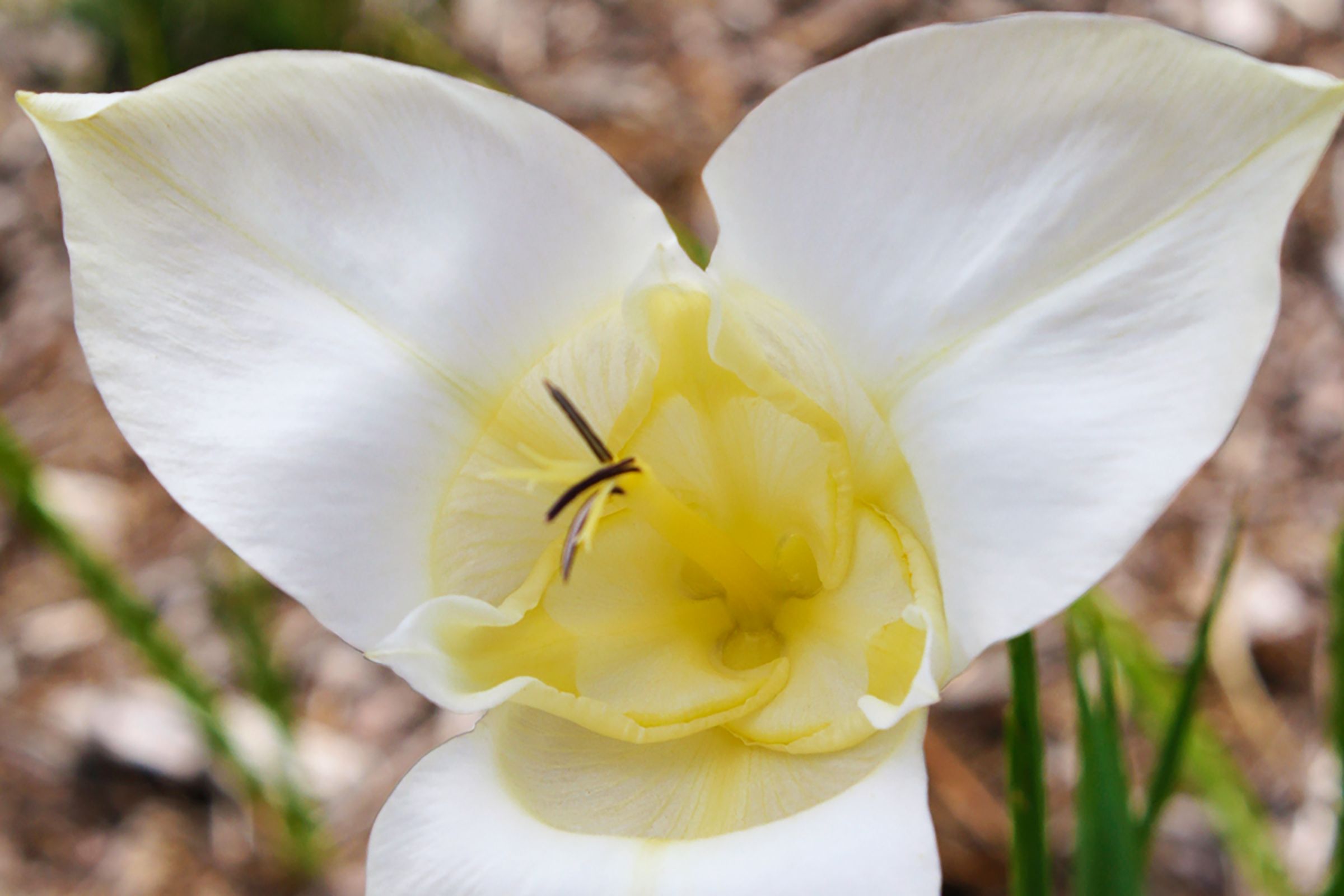
Starting in midsummer, the peacock flower produces iris-shaped blooms up to 6 inches wide in several colors, including orange, pink, yellow, red, and white. These flowers appear above lance-shaped foliage, creating a tropical effect. The shorter, shade-tolerant “Alba Immaculata” variety (shown) features large white flowers with yellow centers and mid-green leaves. This bulb grows up to 30 inches tall and 6 inches wide in Zones 7-9.
It is perfect for adding exotic flair to borders or container gardens. Each flower only lasts a day, but the plant produces new blooms continuously throughout the season.
Surprise Lily and Giant Chincherinchee
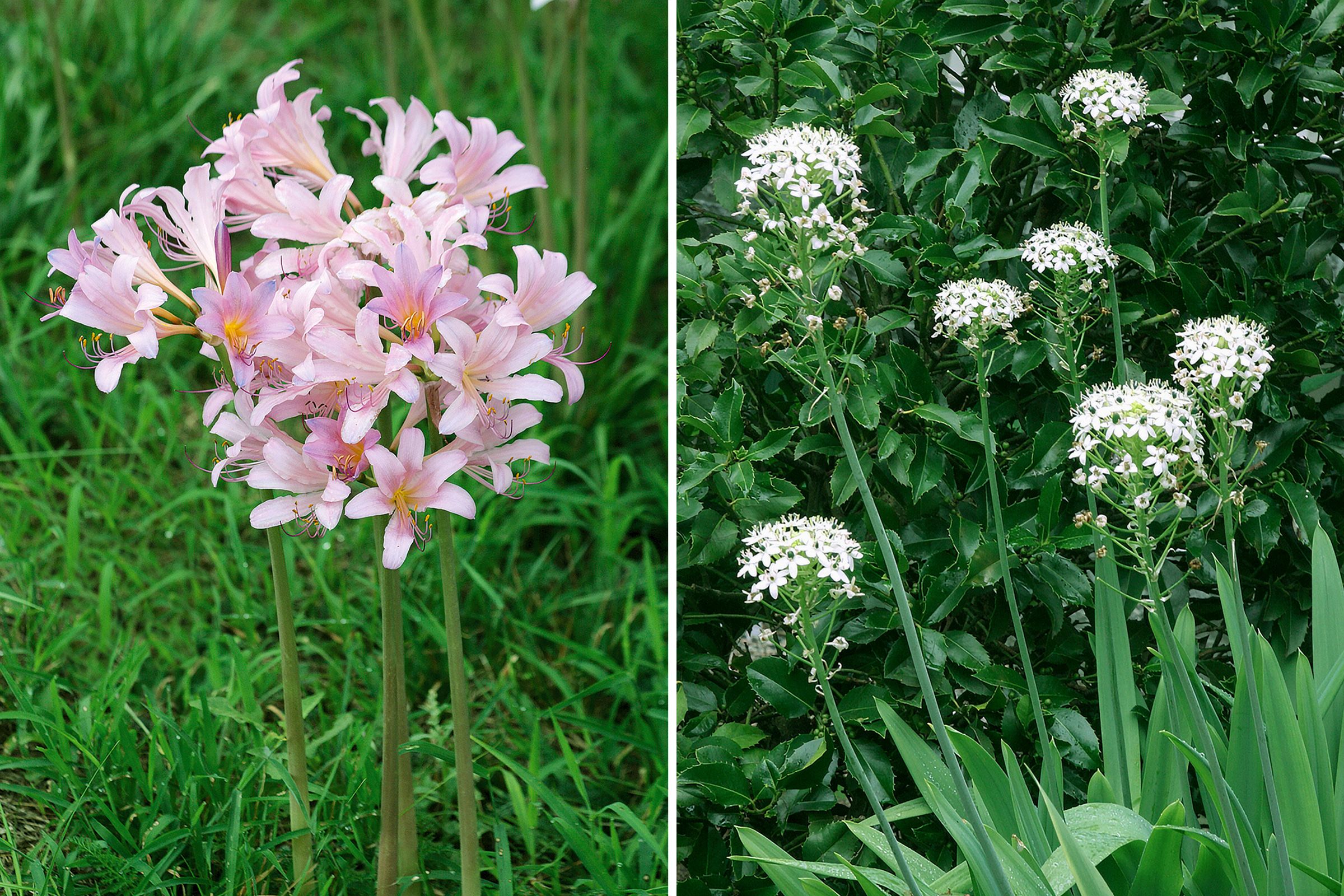
The surprise lily, smaller than other lycoris species, produces pink flowers with blue tips that bloom from August to September. The related resurrection lily (shown on left) has an interesting growth habit. It pushes out foliage in spring that withers in early summer but returns weeks later with fragrant rose-colored flowers with gold centers and blue-to-purple veining. This unique characteristic gives it the common name “Naked Ladies.” They can reach up to 28 inches in height and 16 inches in width in Zones 5-9, adding a delightful element of surprise and late-season interest to the garden.
Similar in appearance to an allium, the giant chincherinchée produces 7-inch-diameter flower heads composed of tiny white or cream star-shaped blooms with black centers. These flowers appear on tall, stiff stems in midsummer. Thriving in partial shade, this bulb also makes an excellent cut flower. This plant, which grows up to 3 feet tall and 2 feet wide and naturalizes in Zones 7-10, makes a nice addition to borders or cutting gardens.
Hardy Begonia
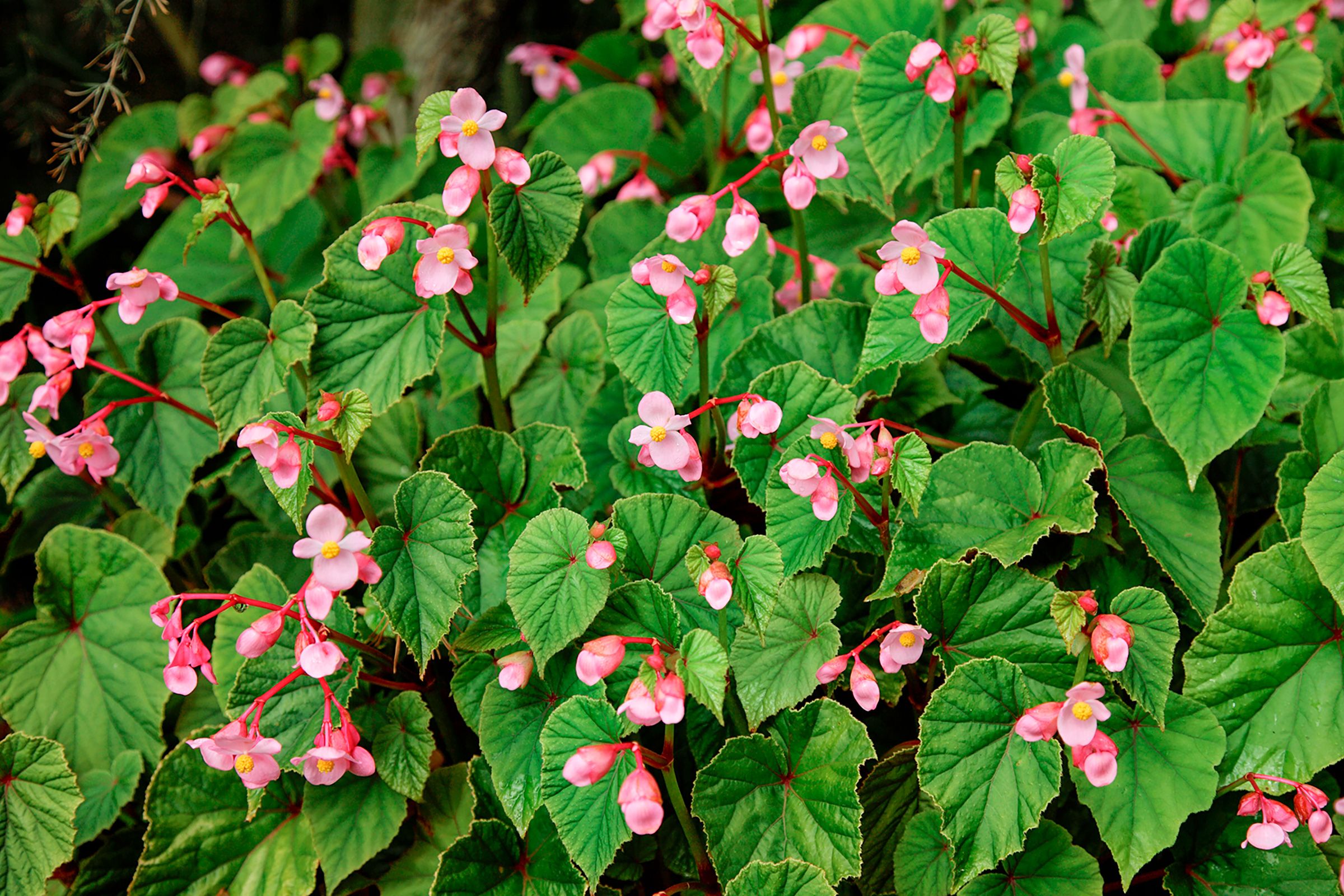
Starting in late summer, the hardy begonia sprouts dark green to red leaves topped with fragrant white or pink flowers in partial to full shade. The “Heron’s Pirouette” variety (shown) features larger, more abundant clusters of flowers than the species, with bold, deep-red stems. This bulb, which grows up to 18 inches tall and 2 feet wide and naturalizes in Zones 5-9, is perfect for adding color to shaded areas of the garden.
Its heart-shaped leaves provide attractive foliage even when the plant is not blooming, making it a valuable addition to woodland gardens or shaded borders.
Caring for Summer-Blooming Bulbs
Here are some maintenance tips to help your summer-blooming bulbs thrive and return year after year.
- Deadheading: Remove spent flowers to encourage continued blooming and prevent the plant from expending energy on seed production.
- Fertilizing: Apply a balanced, slow-release fertilizer when planting and again in early spring when new growth appears.
- Mulching: Add a 2-3 inch layer of organic mulch around your bulbs to retain moisture and suppress weeds.
- Watering: Most summer-blooming bulbs prefer consistently moist but well-drained soil. Water deeply when the top inch of soil feels dry.
- Winter care: In colder regions, dig up tender bulbs after the first frost and store them in a cool, dry place for replanting in spring.
Resources
Jay Hutchins, Brent and Becky’s, Gloucester, VA; 877-661-2852
Robert Lawless, Plant Delights Nursery at Juniper Level Botanic Garden, Raleigh, NC; 919-772-4794
